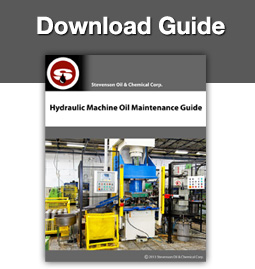For hydraulic systems, monitoring and adhering to schedules will result in lower operating costs and increase the life of the machines and lubricants.
Below are some steps to help you to think through the best plan for oil monitoring in your new and used hydraulic machines.
1. Gather Your Information
This information will be the measure of the end result.
- Review the operating manual to verify that the correct oil is being used.
- Find out the maximum life of the fluid. Most of today’s hydraulic oils are good for 3000-5000 hours depending on the product and the operating conditions. Your lubricant supplier will be able to assist you with this information.
- Check to see the recommended cleanliness levels of the oil. This information should be provided in the machine’s manual. An ISO (International Organization for Standardization) cleanliness level will be three numbers, which will determine the particle count and micron size of the solid contaminants in the fluid (i.e., 19/17/14).
- Verify the recommended filters based on the micron levels (i.e., 10).
2. Assess the Current Condition of the Fluid
- Correctly sample the oil and have it tested to determine the current condition of the oil. Again, your lubricant supplier will be able to assist you with this step.
- Verify the date of the last oil change.
- Verify the date of the last filter change.




